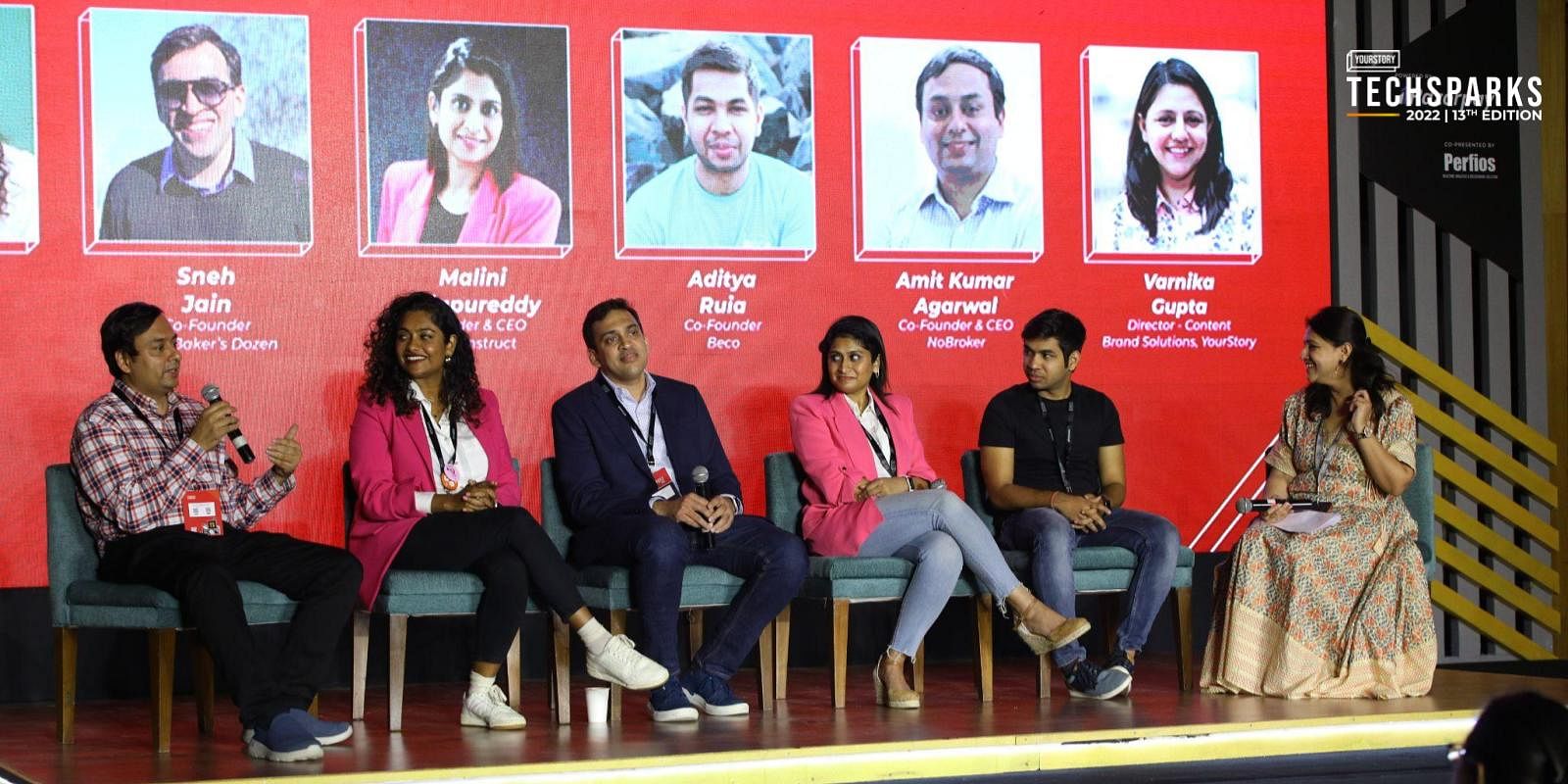With the surge of global innovation, new brands are being launched each day. While some manage to stick with potential consumers and make their mark, others struggle.
What then is the formula for success? The answer lies in effective brand building, which communicates the authenticity, idea, and emotion of a brand as a whole.
To understand what drives the popular attention towards certain brands and helps them stand out, on Day 2 of TechSparks 2022, we saw a panel discussion on the topic ‘Standing out with innovation and brand-building’.
The panel featured Arshya Lakshman, Director – Innovation, Lowe’s India; Sneh Jain, Co-Founder, The Baker’s Dozen; Malini Adapureddy, Founder and CEO, Deconstruct; Aditya Ruia, Co-Founder, Beco; Amit Kumar Agarwal Co-Founder and CEO, NoBroker.
Aditya says, “Build distinctiveness, consistently. Brands are built in the consumers’ mind and not just with your products or communication. You need to have a consistent, unified approach in terms of what you are really trying to communicate and solve for the customer.”
“The product may not be better but it needs to be different for sure,” he adds. “The idea must be to build a brand that can offer uniqueness to the customer and communicate the same at the same time.”
In line with Aditya’s point, Malini states, “A brand is basically about what consumers are taking away. Especially when major market is moving from unorganised to organised, a brand means consistency for the consumer.”
When asked when did you last emotionally connect with a brand? Malini points out that emotional connection can be difficult to achieve, but, it is important to ensure. “It could be [through[ storytelling, or some sort of a value which you are offering and your competition is not,” she says.
Sneh hints that consumers often tend to establish non-conscious relationships with a brand. Going to a grocery store and stopping for a second to check an unfamiliar brand or going with the same choice you have had for years is subject to be affected by the manner in which a brand has connected with you.
Amit breaks the brand building into two components—fixed and variable. In fixed, one needs to be adamant in a singular message being shared across.
He explains this with an example, saying, “Over the last 8 years, we now have a customer base of two crores and now every year we are adding 72 lakh new customers. This means that the customer base has become more, diversity has become more, and we have ourselves diversified other services, So, how do we keep the fixed message of no brokerage, while also shedding light on other things that we are doing which have the same basic sense of customer convenience, cost arbitrage and quality.”
And the latter is where the variable steps in. So what is the solution?
Arshya says the distinction lies in innovation.
It is innovation within brand building that gives rise to the relevance of a brand in a particular period of time. Via innovation, stems brand popularity. Aditya backs this and highlights the importance of understanding the relevance of the category a brand is involved in and innovating accordingly.
He also highlights how consumers’ preferences in contemporary times keep changing. So, innovation also comes with attending to these changing ideas.
Backing this, Malini says, “Change is the only constant. The needs of the consumer have not changed, they have evolved and it is important for a brand to understand how these needs are evolving and how their product works for the evolving needs. So, differentiated positioning is about listening to your consumer very intently, positioning yourself very sharply through that, and understanding that evolving needs are where innovation comes into picture.”
And as rightly pointed out by Arshya, it all boils down to the consumers’ loyalty toward a particular brand, which is fueled by differentiating positioning and innovation.











![Read more about the article [Funding alert] mCaffeine parent raises $31.5M led by Paragon Partners](https://blog.digitalsevaa.com/wp-content/uploads/2022/03/Tarun_Sharma-Funder-Mcaffeine1559635087680-300x148.jpg)